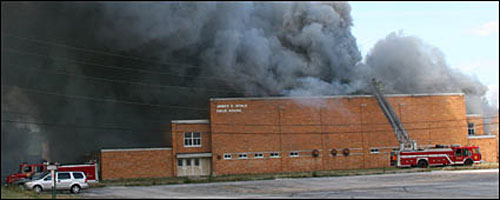Positive Pressure Ventilation: Theory and Practice
Many firefighters consider Positive Pressure Ventilation (PPV) to be a new tactical approach, despite practical application in the United States since the 1980s. Since its inception, PPV has strong advocates and equally strong opponents. In many cases these opinions sprang from observation of inappropriate application of PPV without a sound understanding of how this tactic actually works. Early on there was little scientific research integrated with practical application of PPV tactics.
However, over the last six years the National Institute of Standards and Technology (NIST) has been conducting an ongoing program of research to identify how PPC works, factors influencing effectiveness in varied applications, and best practices in the application of this tactic. Steve Kerber served as principal investigator on this project. Steve is a fire protection engineer (who also serves as a volunteer Chief Officer in Prince Georges County, Maryland). Steve authored an excellent article titled NIST Goes Back to School published in the September/October issue of NFPA Journal.
This article provides a brief overview of the NIST research on PPV to date and outlines a series of tests conducted in a two-story, 300,000 ft2(27,871 m2) retired high school in Toledo, Ohio, to examine the ability of PPV fans to limit smoke spread or to remove smoke from desired areas in a large low-rise structure.
Steve pointed out the effectiveness of appropriate use of PPV as demonstrated in this series of tests, observing:
In this limited series of experiments the pressure was increased sufficiently to: reduce temperatures, giving potential occupants a more survivable environment and increase fire fighter safety, limit smoke spread, keeping additional parts of the structure safe for occupants and undamaged and reducing the scale of the emergency for the fire fighters, and increase visibility, allowing occupants a better chance to self evacuate and providing fire fighters with an easier atmosphere to operate in. Positive pressure ventilation is a tool the fire service can utilize to make their job safer and more efficient.
However, Steve also provided the following cautionary advice:
Ventilation of oxygen limited or fuel rich fires, either naturally or mechanically, can cause rapid fire growth. Ventilation is not synonymous with cooling. Venting was most effective when coordinated with other operations on the fire ground.
Strong advocates of PPV and positive pressure attack (PPA) such as Battalion Chiefs Kris Garcia and Reinhard Kauffmann, authors of Positive Pressure Attack for Ventilation and Firefighting also caution against use of positive pressure ventilation under extremely ventilation controlled/fuel rich conditions due to backdraft potential.
However, there is no clear line defining when fire conditions are sufficiently ventilation controlled to preclude safe and effective use of positive pressure as a ventilation tactic. Safe and effective use of this tactic requires a sound understanding of practical fire dynamics and the potential influence of tactical operations. This reinforces the ongoing need for scientific research and integration of theory and practical fireground experience in defining best practices in tactical ventilation.
NIST Technical Note 1498, Evaluating Positive Pressure Ventilation in Large Structures: School Pressure and Fire Experiments as well as reports related to NIST’s prior PPV research are available at the Fire.Gov web site. Downloadable video footage is also available for each of these NIST PPV tests.
Ed Hartin, MS, EFO, MIFireE, CFO
Tags: fire behavior, fire research, positive pressure ventilation, ppv, Tactical Ventilation



